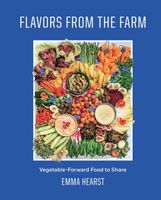Advertisement
On Salad
Appears in
By Emma Hearst
Published 2024

Some say that the true test of a cook’s talent is a simple soup. Others might say it’s a scrambled egg or an omelet. I say that cooks are only as good as the simplest of green salads they can make, but I’m weird like that.
Salads can contain a whole mess of vegetables, from raw to cooked. The composed ones you’ll find in this chapter share some common qualities: a fresh, airy texture, a fatty yet tart taste, and delicately applied dressing. Nearly any combination of ingredients will work in a salad as long as you create a smart mixture and you have the fundamentals—fat, acid, salt—on hand. Creating a “smart” mixture means not combining the softest of lettuces, such as microgreens or buttery mâche, with tougher varieties, like kale or mustards. One won’t do anything to benefit the other. Salads should ebb and flow with the seasons. That means the lettuce choices and any additions should be complementary expressions of what is available at that time of year.

